Experimental and Numerical Studies on the Structural Performance of a Double Composite Wall
Abstract
1. Introduction
2. Experimental Program
2.1. Test Specimens
2.2. Test Results
3. Numerical Approach
3.1. Non-Linear Flexural Analysis Model
3.2. Finite Element Model
4. Analysis Results and Discussions
4.1. Comparison of Test and Analysis Results
4.2. Practical Shear Strength Equation
5. Conclusions
- The end slip between the PC panel and CIP concrete in the flexural and shear specimens was only 0.02 and 0.03 mm, respectively, and the composite performance of the PC panel and CIP concrete was found to be excellent. This is because rough surface finishing was applied to the PC panel, and the shear keys of the upper and lower panels were interlocked with each other.
- In the composite DCW, although the bolts used for assembling the PC panels contributed considerably to the shear resistance mechanism of the member after inclined shear cracking, they failed to exhibit the yield strain until the maximum load was reached. This is because the bolt was not fully embedded in the PC panel concrete, but instead was composite with the PC panel by grout injected into the bolt hole during the assembly process; thus, the bolt and the PC panel failed to achieve fully composite behavior.
- The non-linear flexural analysis model provided very good estimations not only of the flexural strength of the DCW member but also of its initial stiffness and post-cracking stiffness. Therefore, the non-linear flexural analysis model proposed in this study can be adequately applied in the design of DCW and the prediction of its flexural behavior.
- The finite element analysis results showed that when the bolt and the PC panel were assumed to be fully composite, the finite element model overestimated the shear strength of the specimen. However, when the constitutive laws for the bond–slip relationship suggested in the fib model code 2010 were taken into account, the analysis model evaluated the shear behavior of the specimen well, including the shear contribution of the bolts according to the load. In addition, the proposed practical equation, which considers the shear contributions of all the elements constituting the DCW section, provided reasonable shear strength estimation results on the safe side in a simple manner.
- The flexural and shear performances of the DCW member were investigated in this study. For the DCW to be practically applied to construction sites, however, additional experimental and analytical research needs to be conducted regarding the flexural behavior at the foundation–DCW connection.
Author Contributions
Funding
Institutional Review Board Statement
Informed Consent Statement
Data Availability Statement
Conflicts of Interest
References
- Han, S.J.; Jeong, J.H.; Joo, H.E.; Choi, S.H.; Choi, S.; Kim, K.S. Flexural and Shear Performance of Prestressed Composite Slabs with Inverted Multi-Ribs. Appl. Sci. 2019, 9, 4946. [Google Scholar] [CrossRef]
- Ju, H.; Han, S.J.; Joo, H.E.; Cho, H.C.; Kim, K.S.; Oh, Y.H. Shear Performance of Optimized-Section Precast Slab with Tapered Cross Section. Sustainability 2018, 11, 163. [Google Scholar] [CrossRef]
- Hou, H.; Liu, X.; Qu, B.; Ma, T.; Liu, H.; Feng, M.; Zhang, B. Experimental evaluation of flexural behavior of composite beams with cast-in-place concrete slabs on precast prestressed concrete decks. Eng. Struct. 2015, 126, 405–416. [Google Scholar] [CrossRef]
- University of Seoul. Development of Double Composite Wall System Suitable for Basement Exterior Wall Construction; Research Report; University of Seoul: Seoul, Korea, 2018. [Google Scholar]
- Moon, J.H.; Choi, H.C. MDW Structural Performance Test Report; Hannam University: Daejeon, Korea, 2016. [Google Scholar]
- Ji, K.H.; Choi, B.J. Improvement of Underground Wall Design and Construction Safety Using Mega Double Wall Construction Method. J. Korean Soc. Hazard Mitig. 2019, 19, 1–12. [Google Scholar] [CrossRef]
- Kim, S.; Lee, D.E.; Kim, Y.; Kim, S. Development and Application of Precast Concrete Double Wall System to Improve Productivity of Retaining Wall Construction. Sustainability 2020, 12, 3454. [Google Scholar] [CrossRef]
- McKinley, B.; Boswell, L.F. Behaviour of double skin composite construction. J. Constr. Steel. Res. 2002, 58, 1347–1359. [Google Scholar] [CrossRef]
- Ji, X.; Cheng, X.; Jia, X.; Varma, A.H. Cyclic In-Plane Shear Behavior of Double-Skin Composite Walls in High-Rise Buildings. J. Struct. Eng. 2017, 143, 04017025. [Google Scholar] [CrossRef]
- Qin, Y.; Shu, G.P.; Zhou, G.G.; Han, J.H. Compressive behavior of double skin composite wall with different plate thicknesses. J. Constr. Steel. Res. 2019, 157, 297–313. [Google Scholar] [CrossRef]
- Holden, T.; Restrepo, J.; Mander, J.B. Seismic Performance of Precast Reinforced and Prestressed Concrete Walls. J. Struct. Eng. 2003, 129, 286–296. [Google Scholar] [CrossRef]
- Nie, J.G.; Hu, H.S.; Fan, J.S.; Tao, M.X.; Li, S.Y.; Liu, F.J. Experimental study on seismic behavior of high-strength concrete filled double-steel-plate composite walls. J. Constr. Steel. Res. 2013, 88, 206–219. [Google Scholar] [CrossRef]
- Yamamura, K.; Kiyomiya, O. Shear Capacity Enhancement of Existing Underground Wall Structures Using Postinstalled Reinforcing Bars. J. Struct. Eng. 2014, 140, 04013066. [Google Scholar] [CrossRef]
- Hilo, S.J.; Badaruzzaman, W.H.W.; Osman, S.A.; Al-Zand, A.W. Structural behavior of composite wall systems strengthened with embedded cold-formed steel tube. Thin-Walled Struct. 2016, 98, 607–616. [Google Scholar] [CrossRef]
- ACI Committee 318. Building Code Requirements for Structural Concrete (ACI 318-19); American Concrete Institute: Farmington Hills, MI, USA, 2019. [Google Scholar]
- Ju, H.; Han, S.J.; Choi, I.S.; Choi, S.; Park, M.K.; Kim, K.S. Experimental Study on an Optimized-Section Precast Slab with Structural Aesthetics. Appl. Sci. 2018, 8, 1234. [Google Scholar] [CrossRef]
- Collins, M.P.; Mitchell, D. Prestressed Concrete Structures; Prentice-Hall: Bergen County, NJ, USA, 1991. [Google Scholar]
- Lee, D.H.; Han, S.J.; Kim, K.S. Dual Potential Capacity Model for Reinforced Concrete Beams Subjected to Shear. Struct. Conc. 2016, 17, 443–456. [Google Scholar] [CrossRef]
- Ju, H. Multi-Potential Capacity Model for Torsion in Reinforced Concrete Members Subjected to Combined Loads. Ph.D. Thesis, University of Seoul, Seoul, Korea, 2017. [Google Scholar]
- MacGregor, J.G.; Wight, J.K. Reinforced Concrete Mechanics and Design, 4th ed.; Prentice-Hall: Bergen County, NJ, USA, 2006. [Google Scholar]
- ABAQUS. Standard User’s Manual, Ver.6.9; Hibbit, Karlsson & Sorensen Inc.: Providence, RI, USA, 2003. [Google Scholar]
- International Federation for Structural Concrete (fib). Model Code 2010; Final Version; fib Bulletins 65 & 66; International Federation for Structural Concrete: Lausanne, Switzerland, 2012. [Google Scholar]
- Genikomsou, A.S.; Polak, M.A. Finite element analysis of punching shear of concrete slabs using damaged plasticity model in ABAQUS. Eng. Struct. 2015, 98, 38–48. [Google Scholar] [CrossRef]
- Sümer, Y.; Aktaş, M. Defining parameters for concrete damage plasticity model. Chall. J. Struct. Mech. 2015, 1, 149–155. [Google Scholar] [CrossRef]
- KCI. Korea Model Code 2017; Korea Concrete Institute: Seoul, Korea, 2017. [Google Scholar]
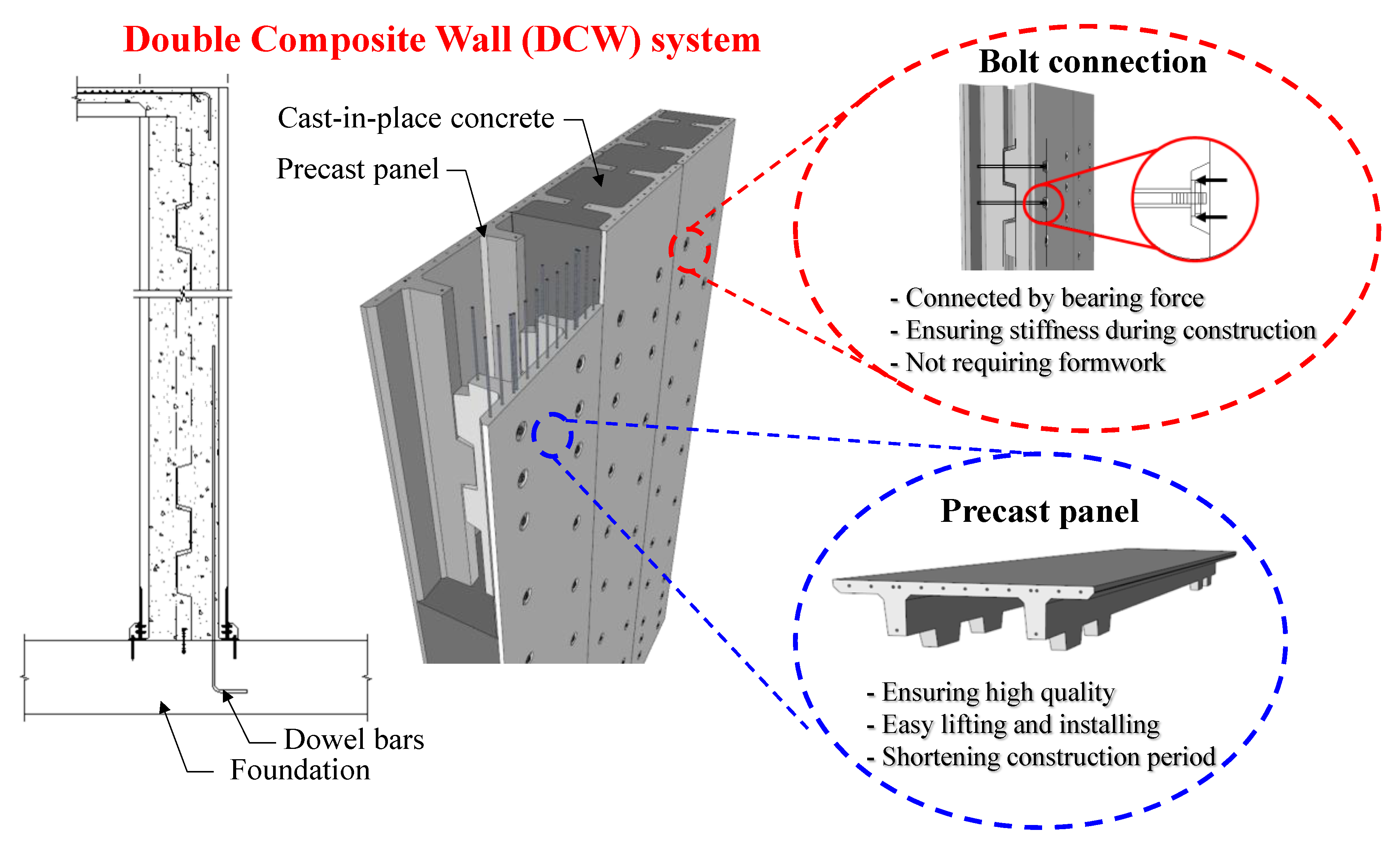
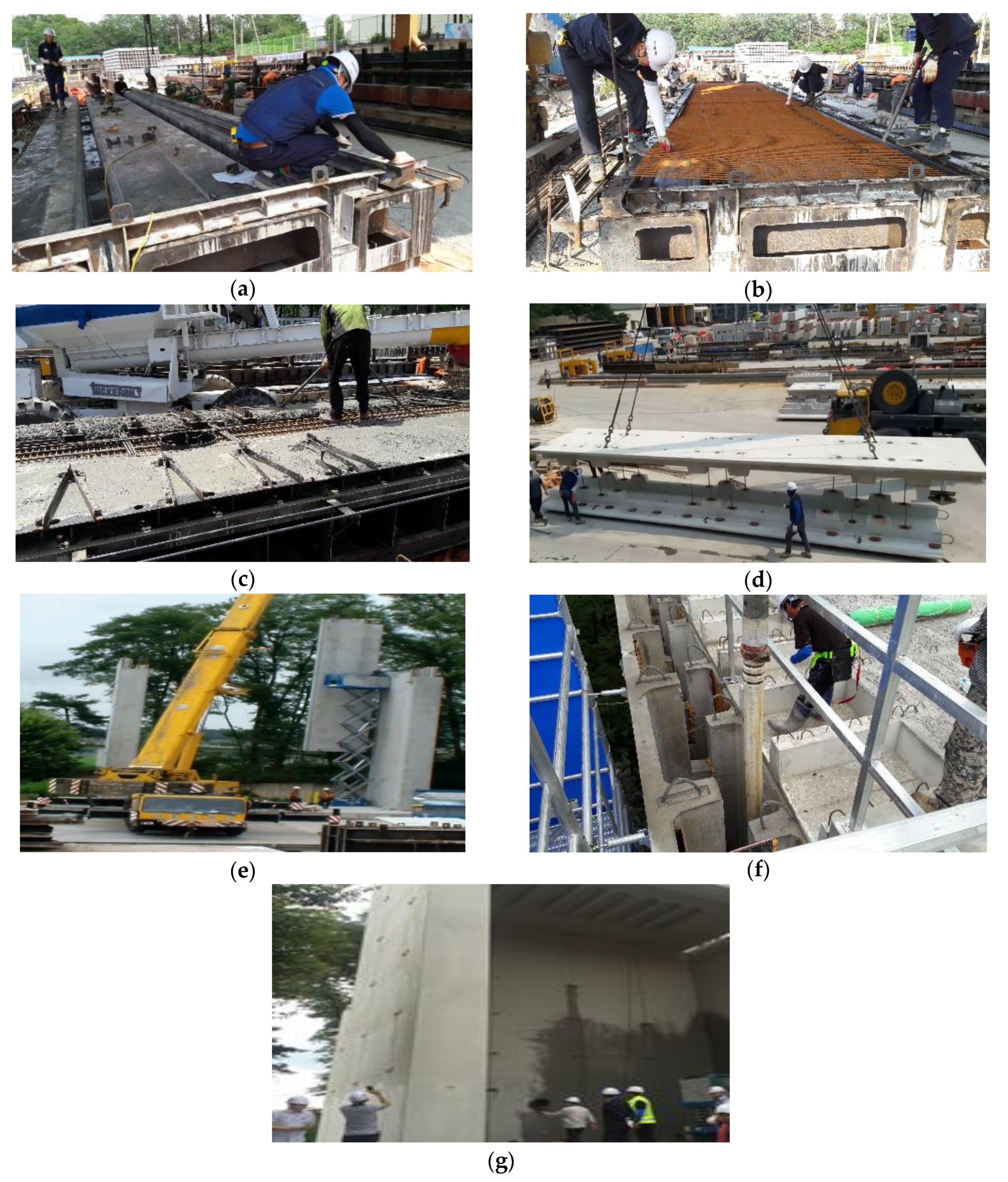


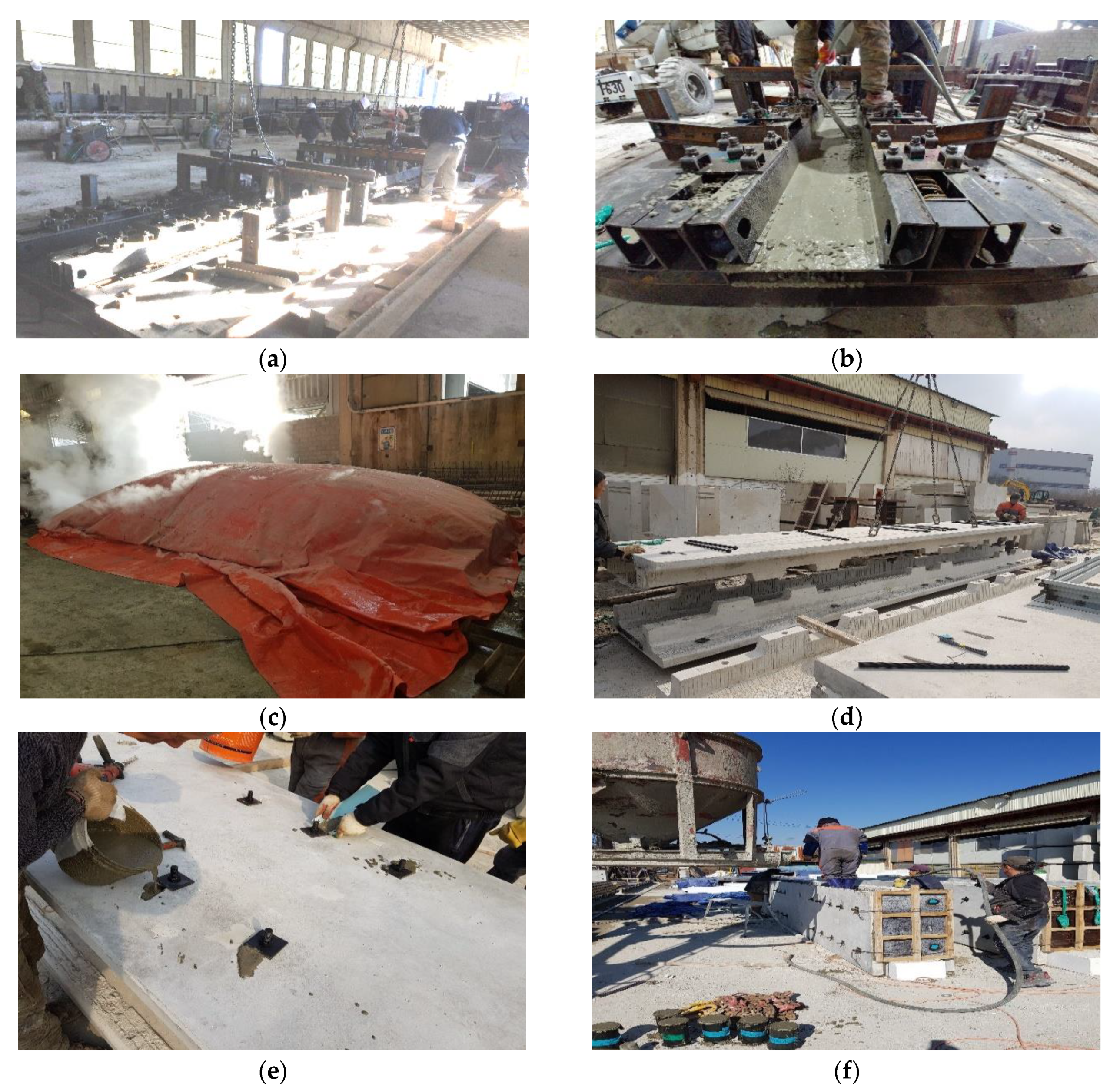
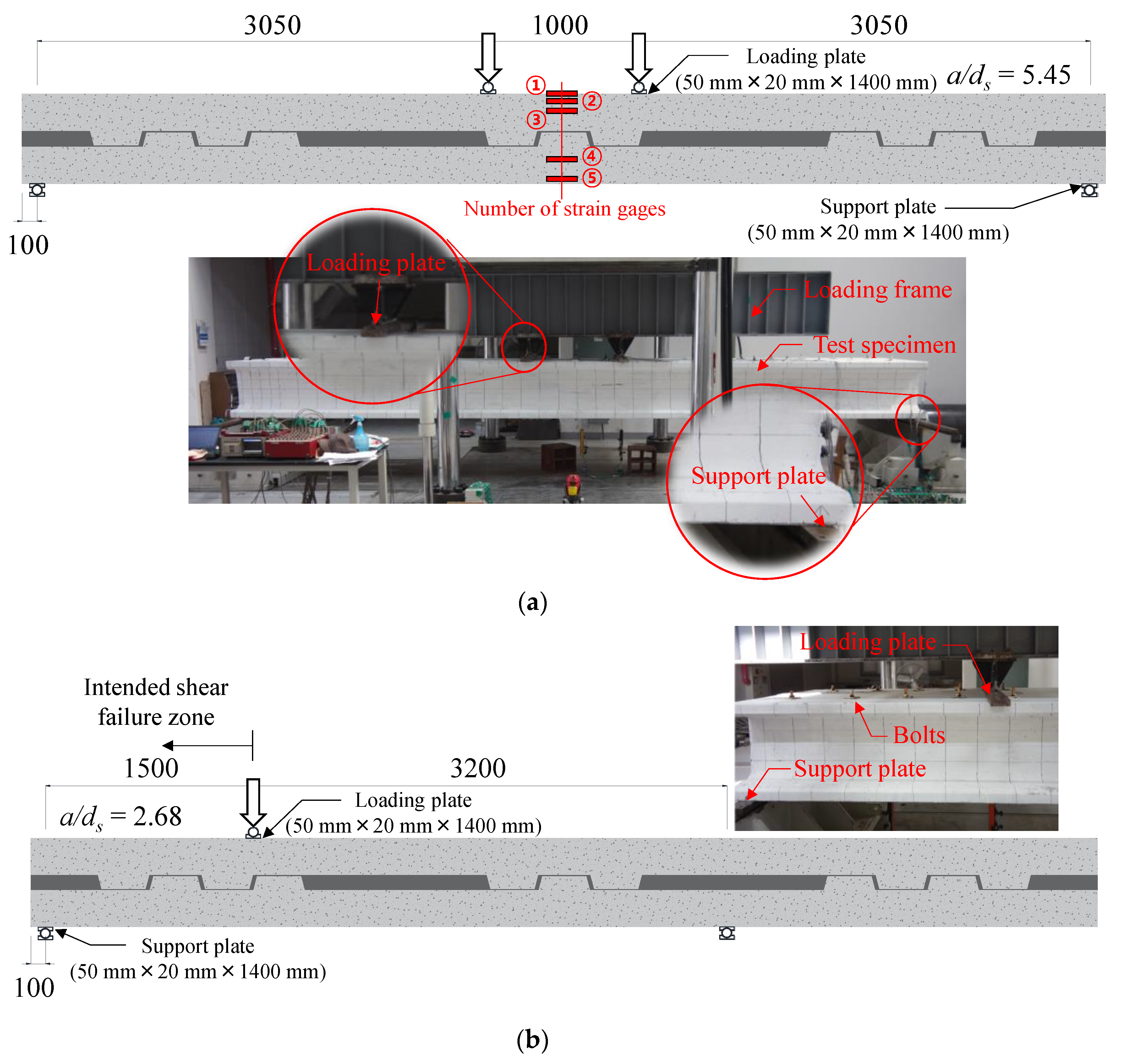
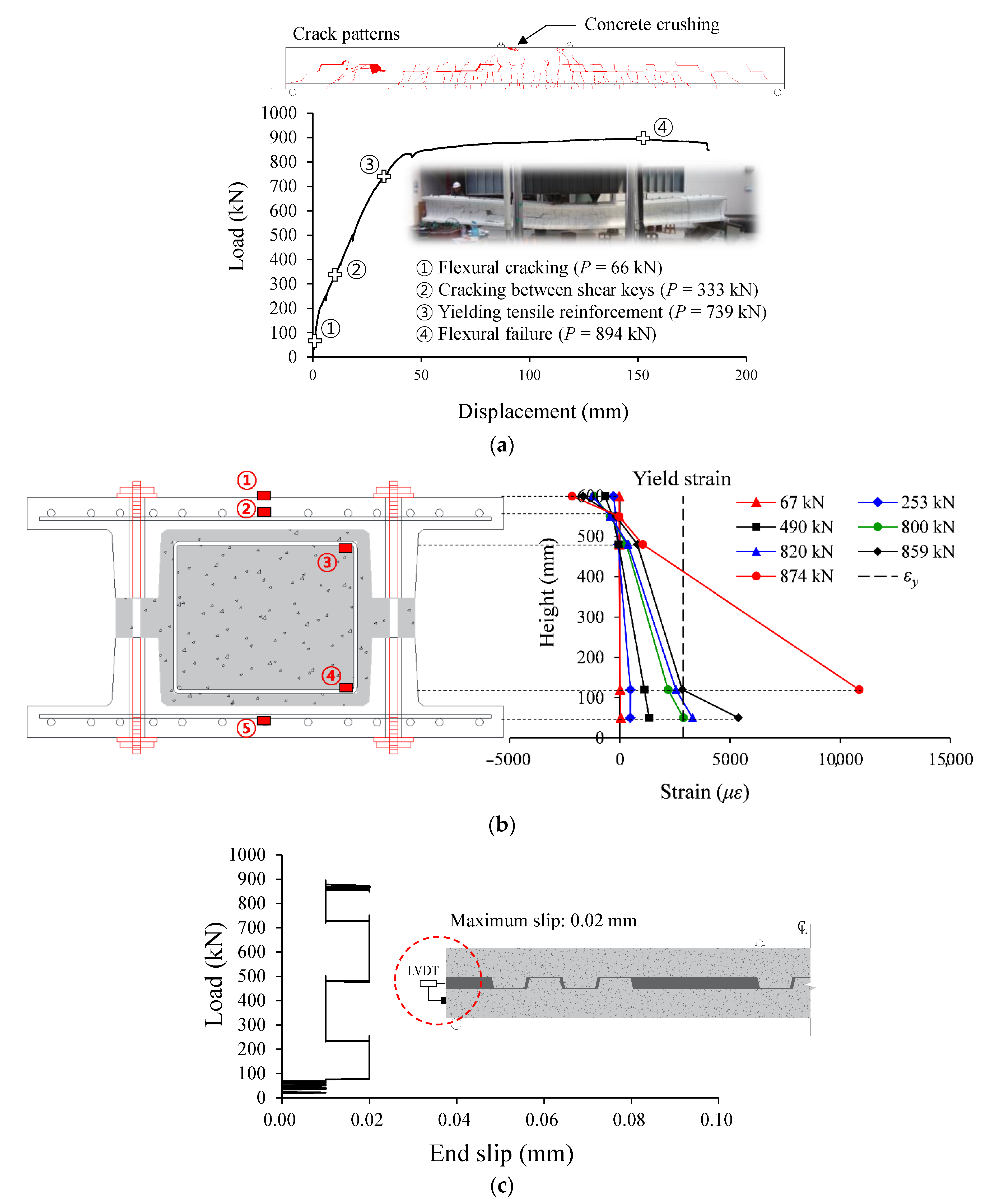
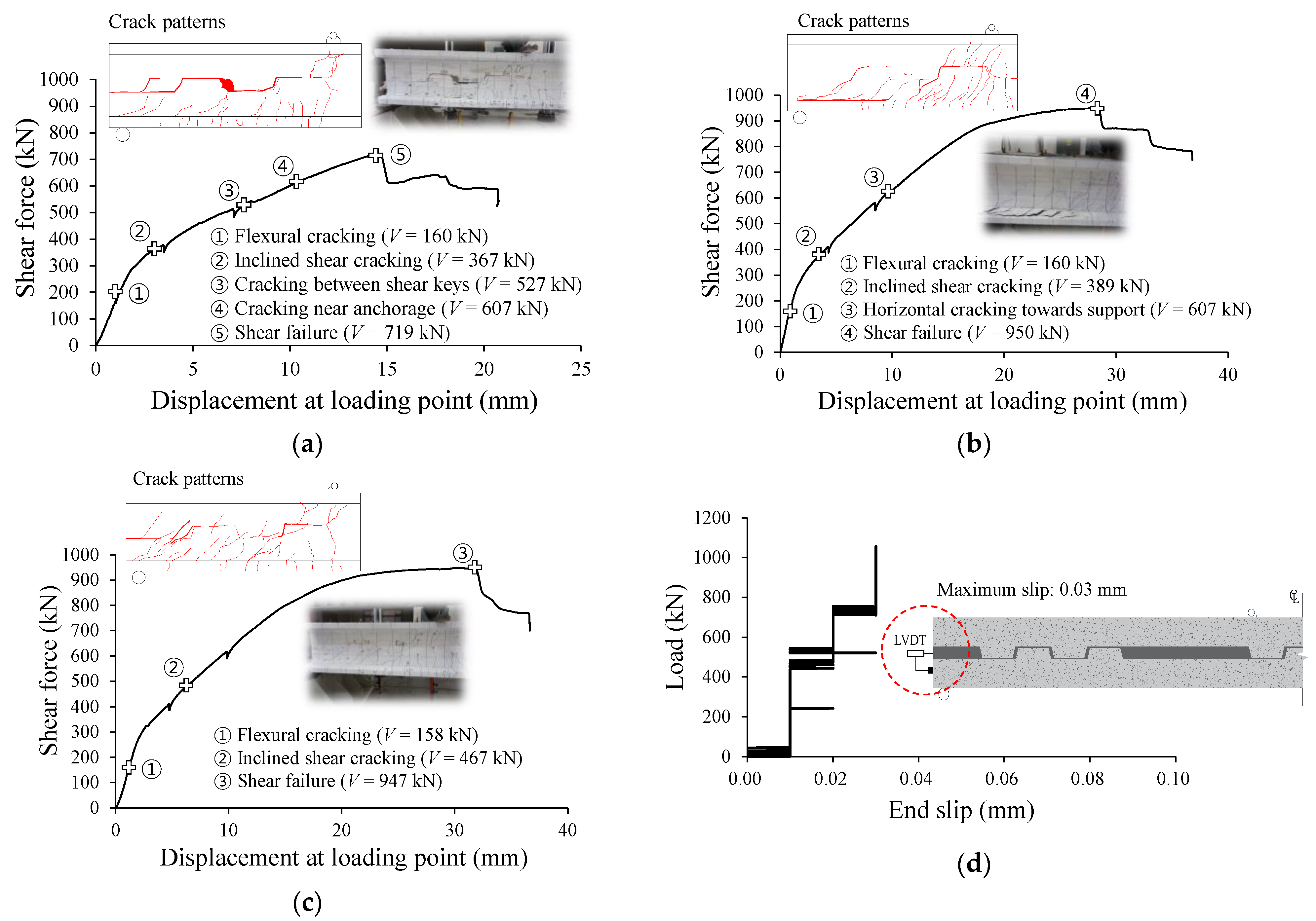
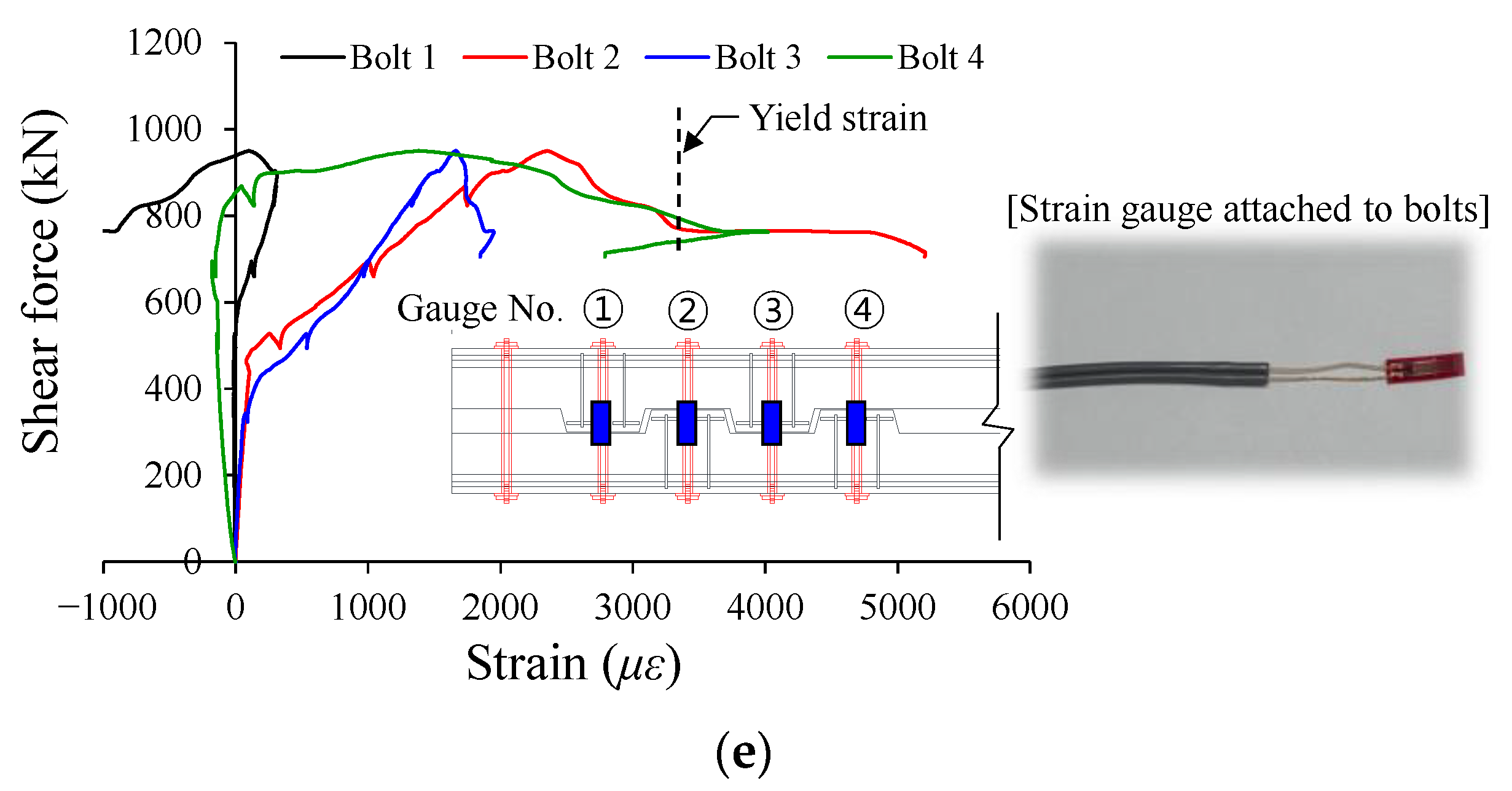
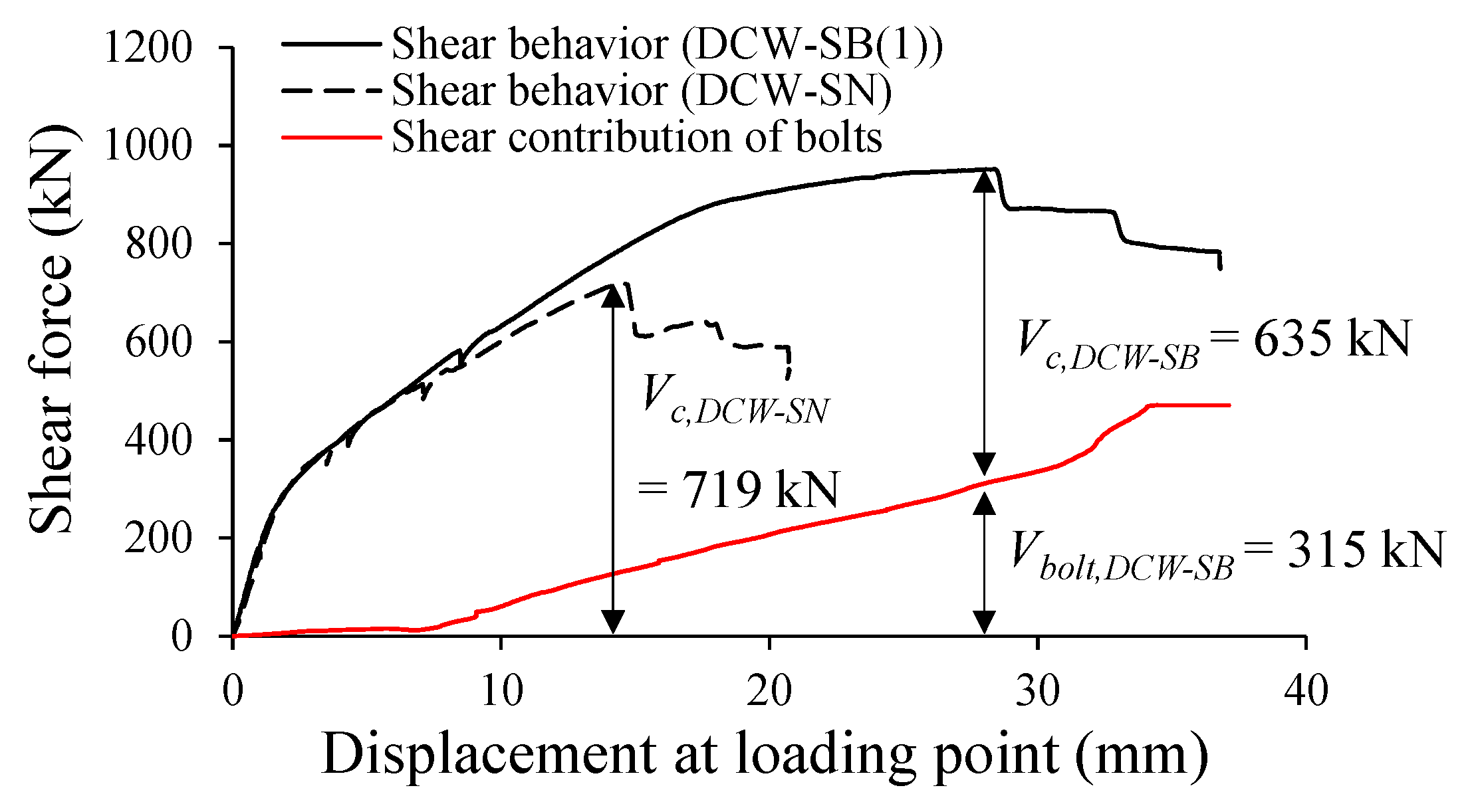
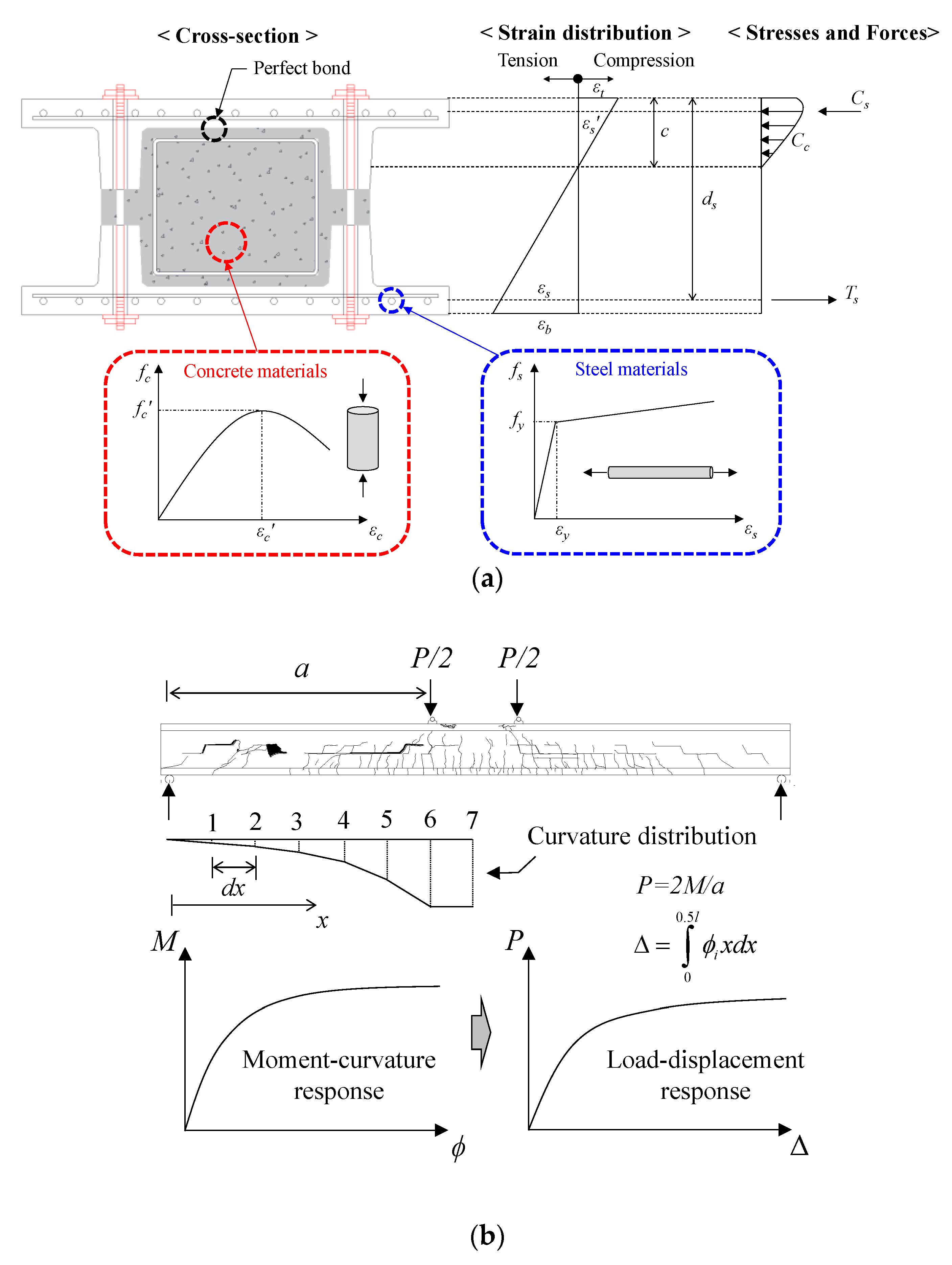

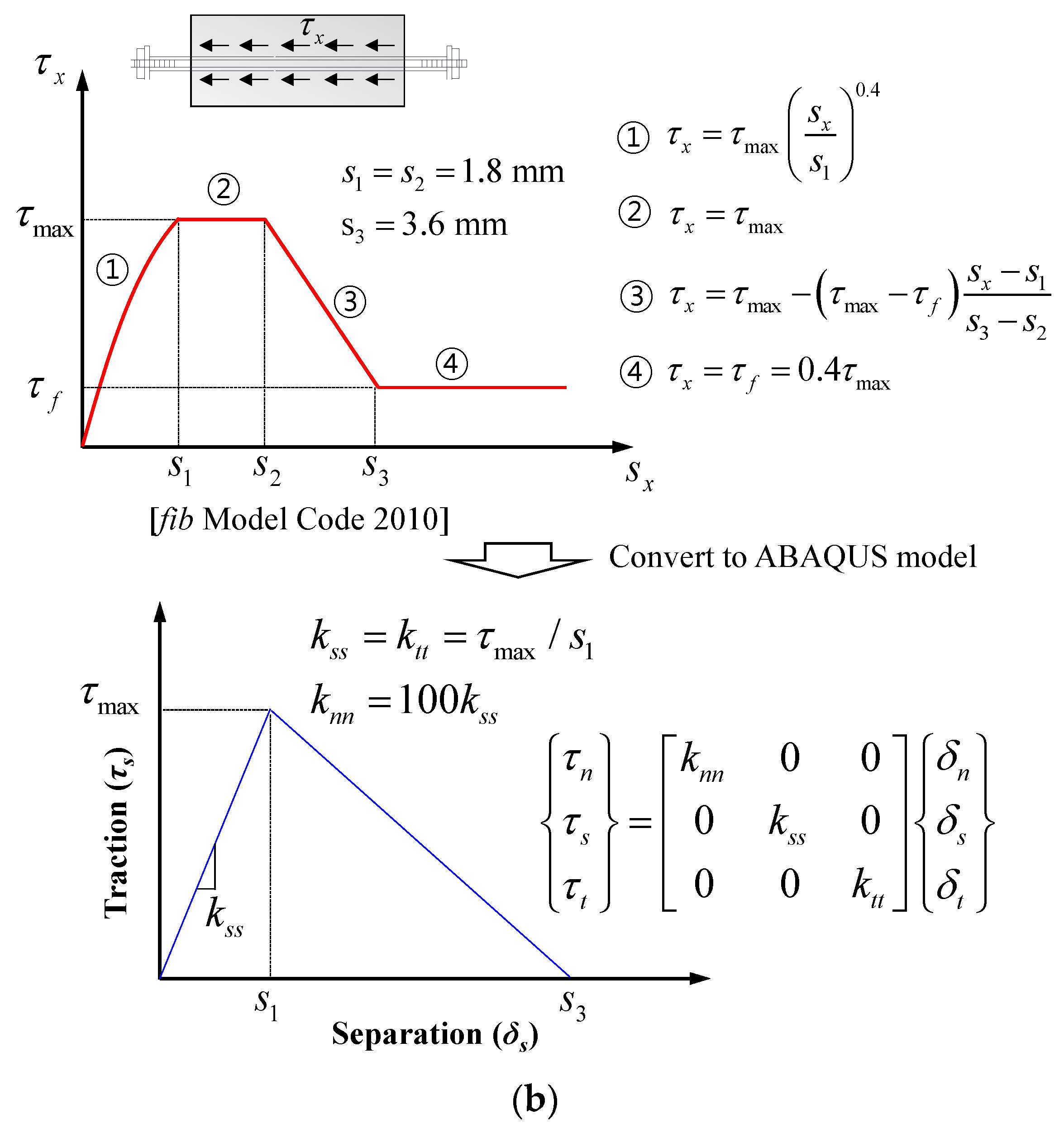
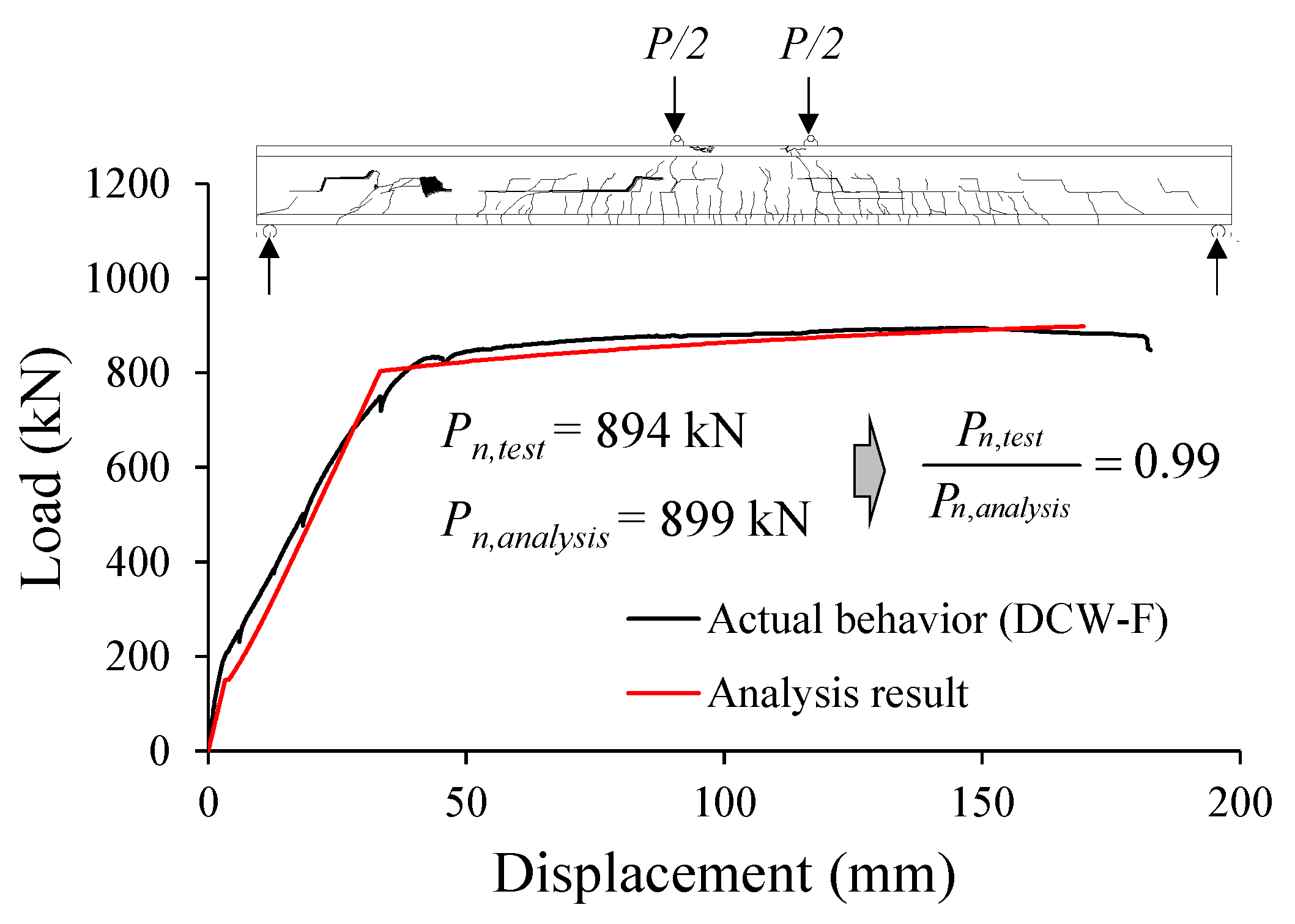
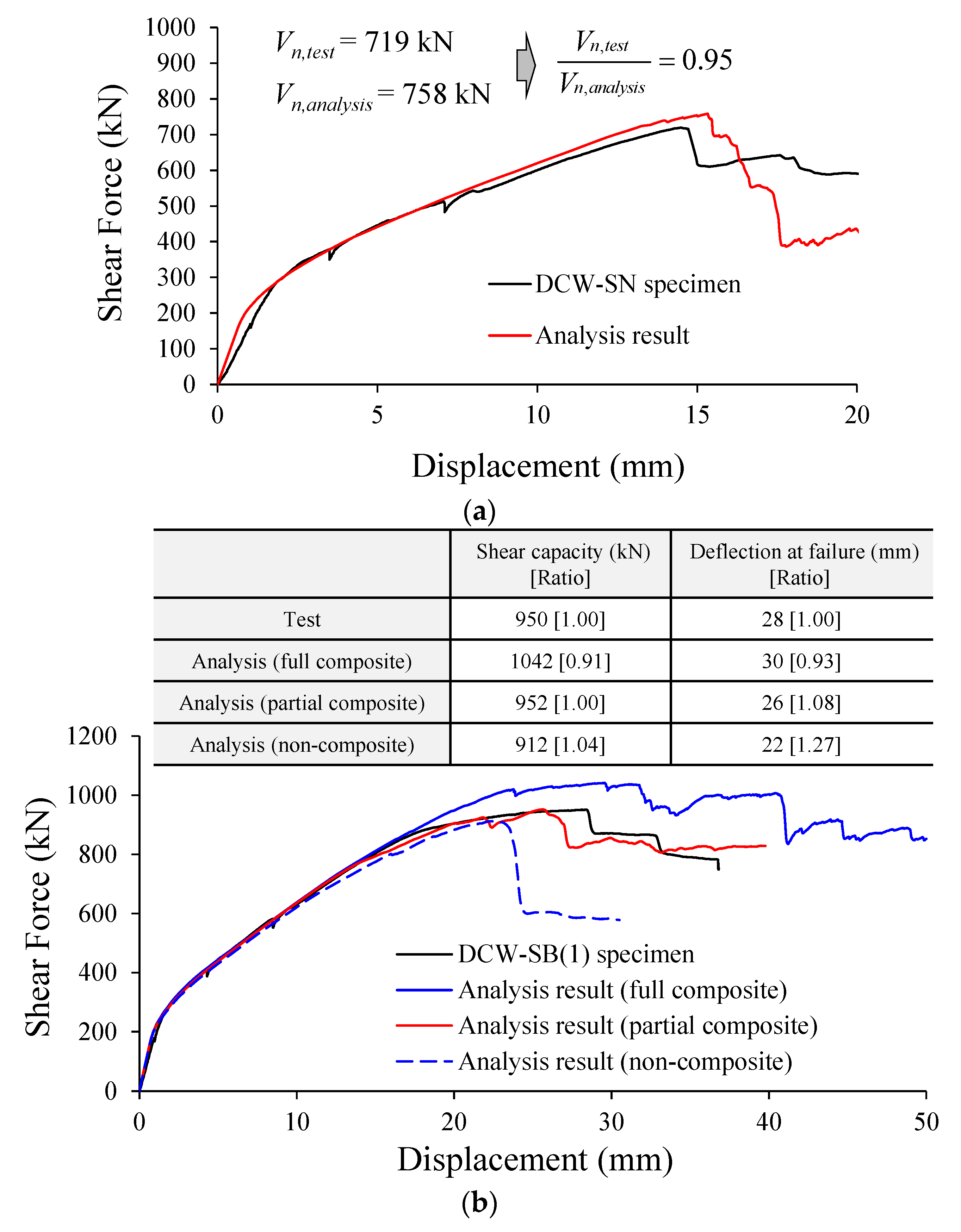
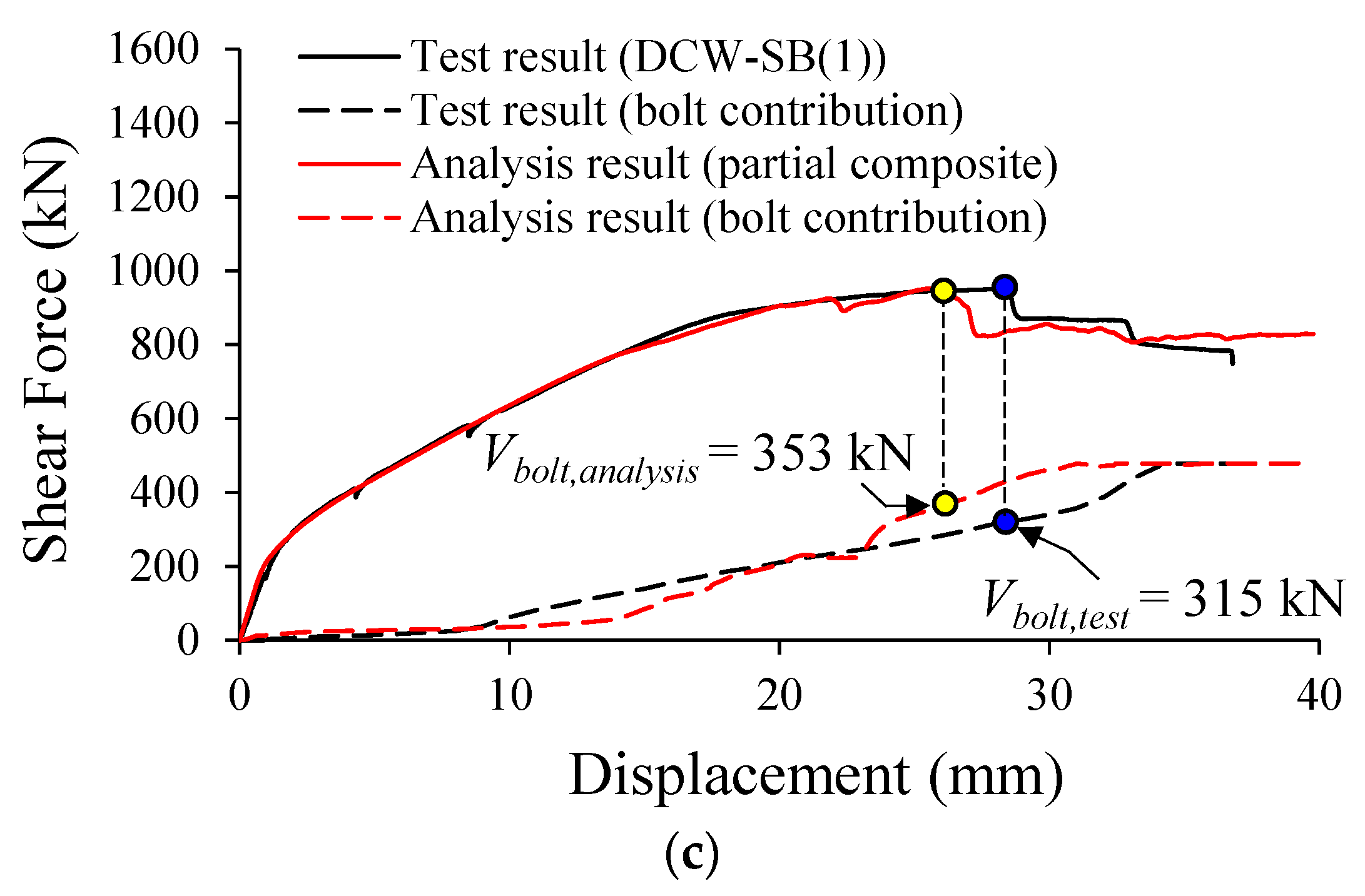
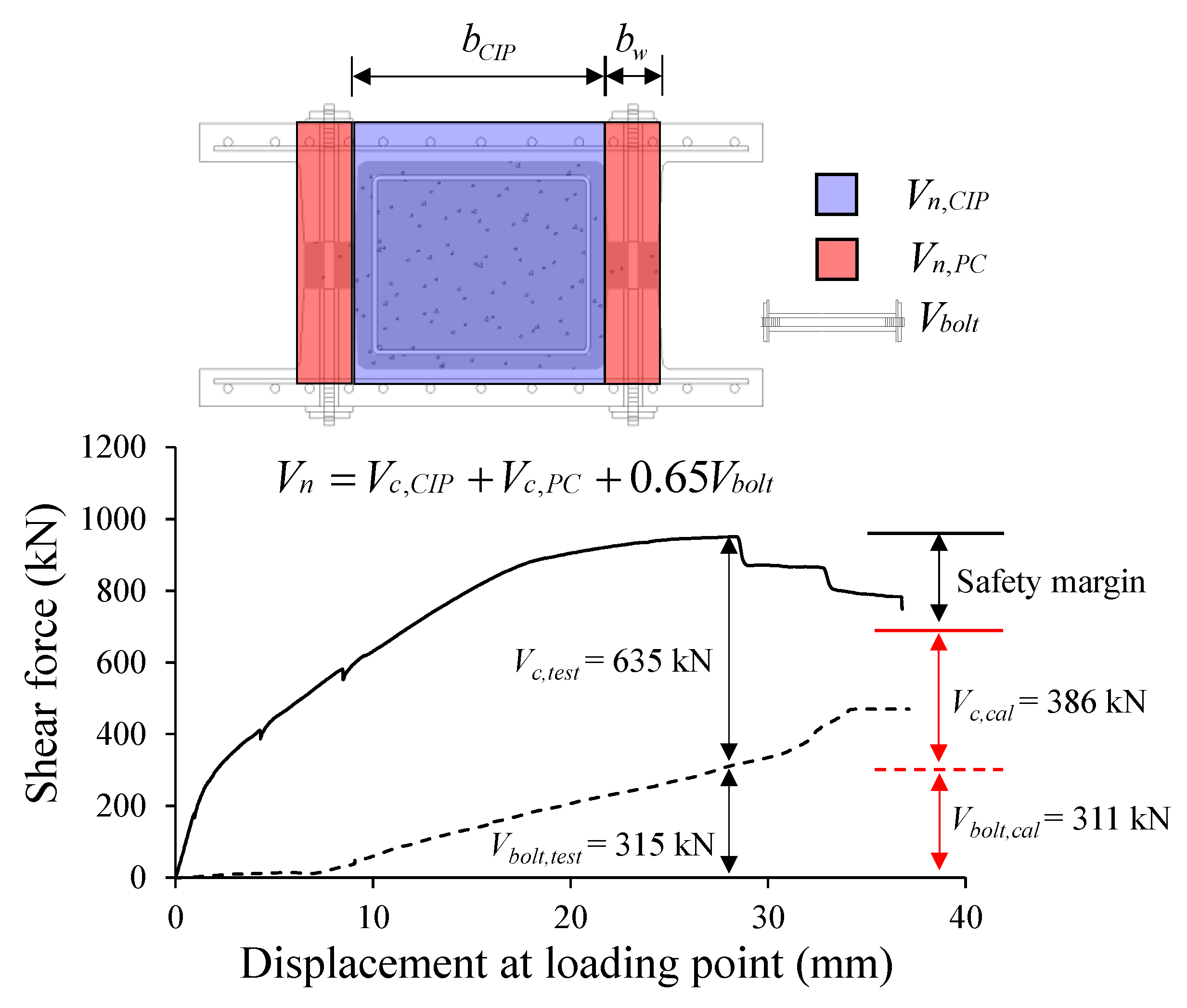
| Specimen | h | tf | ds | b | bw | As | Asv | Abv | fy | fvy | fvb | f’c,PC | f’c,CIP |
|---|---|---|---|---|---|---|---|---|---|---|---|---|---|
| mm | mm | mm | mm | mm | mm2 | mm2 | mm2 | MPa | MPa | MPa | MPa | MPa | |
| DCW-F1 | 600 | 80 | 560 | 1190 | 120 | 3724 | 143 | 628 | 625 | 591 | 476 | 42.6 | 23.5 |
| DCW-SN | 600 | 80 | 560 | 1190 | 120 | 3724 | - | - | 625 | 591 | 476 | 40.2 | 23.5 |
| DCW- SB(1) | 600 | 80 | 560 | 1190 | 120 | 3724 | - | 628 | 625 | 591 | 476 | 40.4 | 23.5 |
| DCW -SB(2) | 600 | 80 | 560 | 1190 | 120 | 3724 | - | 628 | 625 | 591 | 476 | 40.4 | 23.5 |
Publisher’s Note: MDPI stays neutral with regard to jurisdictional claims in published maps and institutional affiliations. |
© 2021 by the authors. Licensee MDPI, Basel, Switzerland. This article is an open access article distributed under the terms and conditions of the Creative Commons Attribution (CC BY) license (http://creativecommons.org/licenses/by/4.0/).
Share and Cite
Han, S.-J.; Heo, I.; Kim, J.-H.; Kim, K.-S.; Oh, Y.-H. Experimental and Numerical Studies on the Structural Performance of a Double Composite Wall. Appl. Sci. 2021, 11, 506. https://doi.org/10.3390/app11020506
Han S-J, Heo I, Kim J-H, Kim K-S, Oh Y-H. Experimental and Numerical Studies on the Structural Performance of a Double Composite Wall. Applied Sciences. 2021; 11(2):506. https://doi.org/10.3390/app11020506
Chicago/Turabian StyleHan, Sun-Jin, Inwook Heo, Jae-Hyun Kim, Kang-Su Kim, and Young-Hun Oh. 2021. "Experimental and Numerical Studies on the Structural Performance of a Double Composite Wall" Applied Sciences 11, no. 2: 506. https://doi.org/10.3390/app11020506
APA StyleHan, S.-J., Heo, I., Kim, J.-H., Kim, K.-S., & Oh, Y.-H. (2021). Experimental and Numerical Studies on the Structural Performance of a Double Composite Wall. Applied Sciences, 11(2), 506. https://doi.org/10.3390/app11020506







